In winter, you usually turn on the air conditioner to warm yourself, right? Then, how about fish? How can they keep warm? Fish are poikilothermic animals, and they can not control their body temp but rely on the surrounding temperature. Therefore, an aquarium heater is necessary for most fish species. There are different types of aquarium heaters for freshwater and saltwater tanks, glass heaters, quartz heaters, titanium heaters, and PTC heaters for instance. In this article, let’s explore the aquarium heater basics further.
Content Table
What is the use of an aquarium heater?
An aquarium heater is a piece of equipment to heat the water and maintain stable water temp in fish tanks. And the heaters run on electricity. Accordingly, heaters are waterproof. Immersed and submerged heaters are two different kinds. Immersed one works fully immersed in the water, while a submerged heater runs half submerged in the water. Nonetheless, submerged heaters may lead to electric leakage.
Then is an aquarium heater vital for all fish species? It varies from fish species. For tropical fish, an aquarium heater is necessary. Provided that you keep fish in too low or too high water temp, fish may become stressed and less active. More seriously, it will lead to a weak immune system or even death.
In short, aquarium heaters can make sense in the following aspects. On the one hand, they can heat the water in the fish tank and provide suitable water temp for fish. It narrows the temperature differences and protects fish from sudden temperature fluctuation. On the other hand, the aquarium heater runs on electricity and then transforms into heat. The water temp increases as you turn on it. In addition, most heaters can automatically turn on and off according to the setting water temperature. It prevents sudden fluctuations of water temp. Consequently, you do not need to worry about overheating.
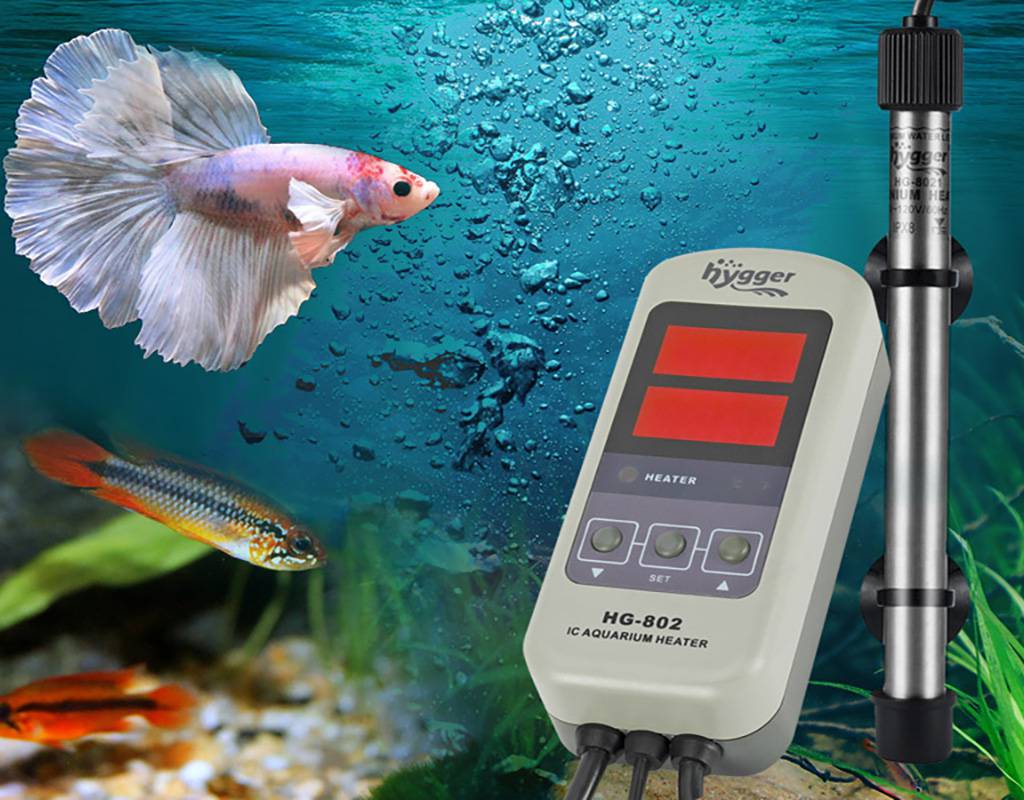
Types of aquarium heater
According to the placement, or material, aquarium heaters can be divided into various types. In this part, we will learn further about the aquarium heater types. Let’s dive in.
Hang-on aquarium heater & Submersible aquarium heater
1. Hang-on aquarium heater
The hang-on aquarium heater is common and cheap. A hang-on aquarium heater can be hung on the top edges of a fish tank or behind the fish tank. It usually possesses a glass tube and a heating element.
Pros:
- Easy to use
- Cheap
Cons:
- Not perfect for saltwater tanks
- Can not heat all the water in the fish tank equally
2. Submersible aquarium heater
Submersible aquarium heaters can be placed in the water directly, as they are waterproof. Then, you can install the heater horizontally or vertically, but make sure in the areas with strong water currents. Nonetheless, do not install the heater close to the gravel or the aquarium glass. A submersible aquarium heater with an internal thermostat will be excellent, as it helps to read more accurate water temp in time.
Pros:
- Can be fully submerged in the water
- Efficient at regulating water temp
Cons:
- May reduce the ornamental value
Aquarium glass heater & Stainless steel heater
1. Glass aquarium heater
The Glass aquarium heater can be used in various types of fish tanks, like freshwater and saltwater aquariums. Nevertheless, in tanks with large fish, it is better to add a protective cover to your heater, or the heater may become cracked.
Pros:
- Good quality
- Cheap
- Ideal for freshwater and saltwater tanks
Cons:
- Low power
- Heat up slowly
- Not suitable for tanks with large fish
2. Stainless steel aquarium heater
Stainless steel aquarium heater always possesses a stainless steel shell. It can be installed vertically, horizontally, or at a certain angle. But do not bury it in the gravel or substrate.
Pros:
- Durable
- Cheap
Cons:
- Not suitable for saltwater tanks
- Risk of explosion
Aquarium quartz heater & PTC heater & titanium heater
1. Quartz aquarium heater
The aquarium quartz heater is perfect for freshwater and saltwater aquariums, especially the double quartz heaters, including 5–237 gallons. A built-in intelligent LED digital temperature display and three probes make the heater monitor the real-time water temperature. Besides that, the heater can be fixed in every corner of a fish tank because of the strong suction cup bracket.
Pros:
- Durable
- Explosion-proof
- Corrosion protection
- Heat up fast
- Anti-dry protection
- High temperature resistant
Cons:
- If the heater does not fully submerge, it can not work properly.
2. PTC aquarium heater
PTC aquarium heater is a common type, which is composed of a PTC ceramic heating element and aluminum tube. It is a rare electric heater that can keep constant water temperature automatically.
Pros:
- Energy saving
- Low thermal resistance
Cons:
- Fragile
- Expensive
3. Titanium aquarium heater
The titanium aquarium heater could keep fish tanks at the right temperature. It is feasible to place the heater horizontally. However, the heater must be connected to the temp controller. And the heater as well as the thermometer must be fully submerged.
Pros:
- Separate controller: easily adjust the temperature from low to high
- Shatterproof
- Corrosion protection: ideal for freshwater, saltwater, and reef tanks
- Automatic shut-off system: keep water temp within the desired degree
Cons:
- Not suitable for acrylic and turtle tanks
- Can not be buried under gravel
- Can not use the heater rod alone
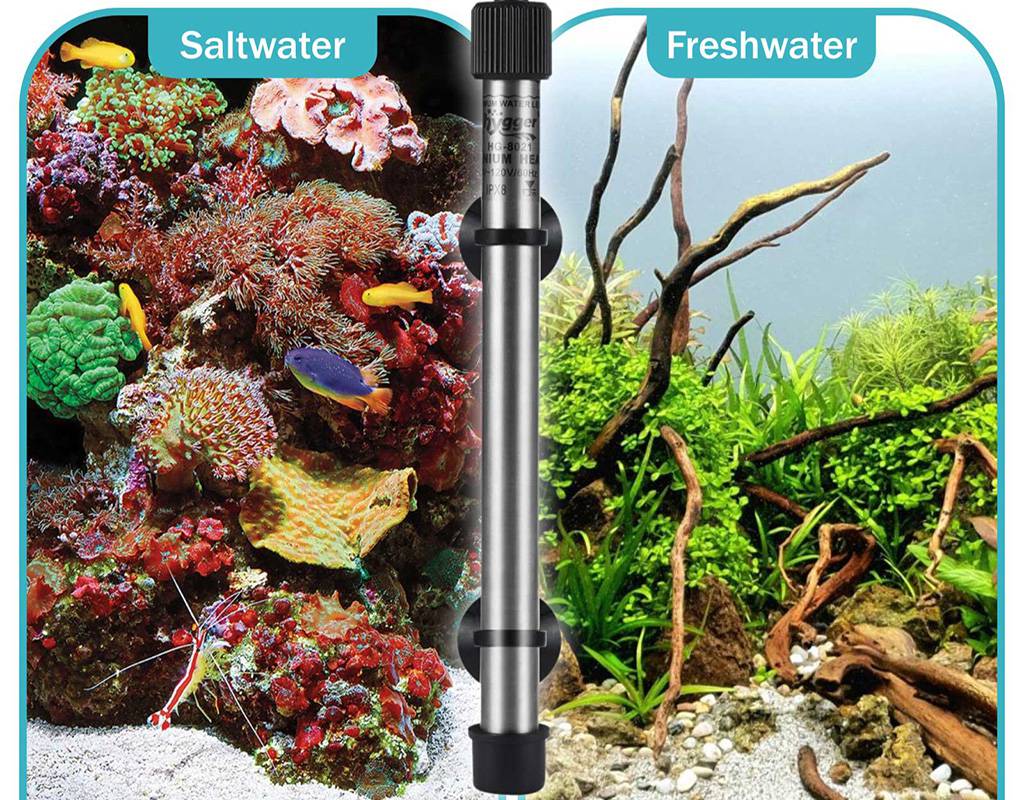
Condensation in the aquarium heater
What is condensation in an aquarium heater? It is the result that moisture or water in the aquarium heater condensates as the water temperature changes. Condensation in an aquarium heater is normal, but it may also be a symbol of problems for a heater.
Nevertheless, how can water get into the aquarium heater? To begin with, the water will enter a heater directly if the glass is cracked. In this case, electrical components may suffer fry. Besides that, the seal gets damaged as time goes by, and then water can get into the aquarium heater. Moreover, the aquarium heater is exposed to wet surroundings during the production process. It will cause condensation because of temperature differences.
Then, how to deal with condensation? The following options are available. For one thing, you can try to repair the heater. It means replacing the damaged glass or seal and drying the heater. But it is time-consuming, while also cheap. For another thing, just replace the heater and get a new one. Then appropriately install the new aquarium heater.
How long do keep the heater on in the fish tank?
Most aquarium heaters can auto on and off according to the setting number. Therefore, the heater should be kept plugged in for 24 hours for a fish tank needs an aquarium heater, it can automatically turn on or off according to the setting temperature. Consequently, it reduces the risk of sudden cooling and prevents abrupt changes in water temp. Aside from that, a built-in thermometer helps you to check the real-time water temp and avoid unnecessary shock and stress.
However, you do not need to keep the aquarium heater on for some common cases. In summer, for example, most cold water fish do not require a heater, as a goldfish, white cloud mountain minnow, and rosy red minnow do. On the other hand, it is necessary to clean the aquarium heater when you’re doing water changes. In this case, you need to turn off the heater, and then take it out of the aquarium. Meanwhile, you should prepare a spare aquarium heater for temporary use. Nonetheless, it is better to keep two aquarium heaters in your aquarium. As there is still one running to keep stable water temp when another one is damaged.
Also, most fish are fond of warm water, except some cold water fish. Stable water temp makes sense in strengthening fish’s immune system and preventing disease. For most tropical fish, 75-80℉ is great, while most cold-water fish require a water temperature below 70℉.
Aquarium heater tips for cold weather
In this segment, we are likely to share some tips for using an aquarium heater in cold weather. Firstly, while changing the water, you should make the heater submerge in the water rather than expose it to the air. In the meantime, do not turn off your aquarium heater in the air. Or it will burn out the heater rod or shatter the glass. Second, check aquarium heaters regularly. It can determine whether the heater still works or not. Besides that, great water flow around the heater is necessary.
Likewise, it is recommended to place 2-3 small heaters in a fish tank instead of one large heater. It avoids the water temp dropping extremely in case of one broken. Finally, for tanks with an aquarium heater, you should shut off the heater before changing the water. If you need a mini heater for your small tank, please go to my article Newest Small Aquarium Heaters for Tiny Tanks to find the right small heater.
Aside from the aquarium heater to keep warm, there are other ways, including a tank hood, hot water container, and warm water for water changes. To learn more about that, please go to Do I Need a Heater for an Aquarium.
After reading, have you gained a deeper understanding of aquarium heaters? If you are likely to share more info about aquarium heaters, feel free to leave your ideas in the comment! Finally, thank you for reading.
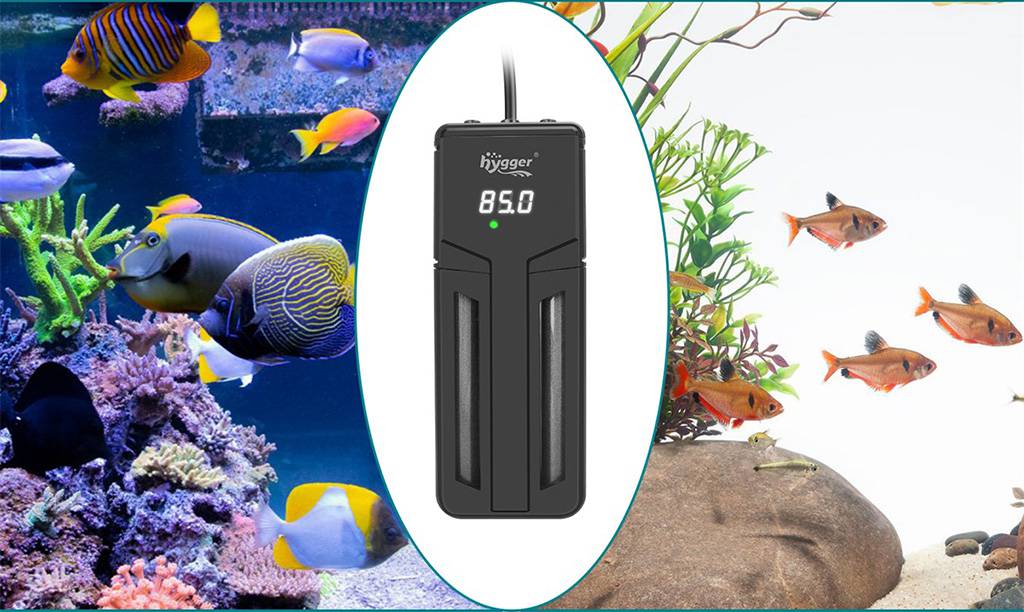
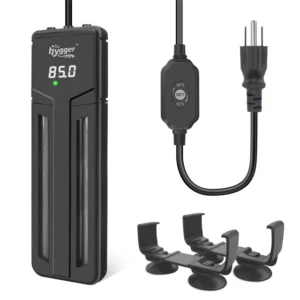
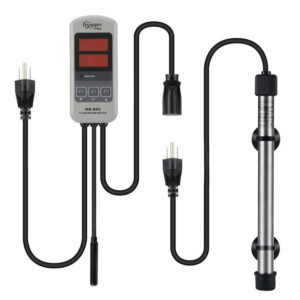
Your point of view caught my eye and was very interesting. Thanks.